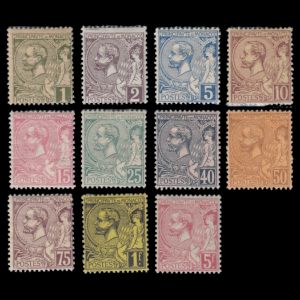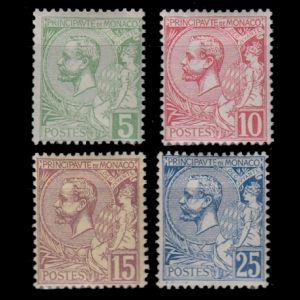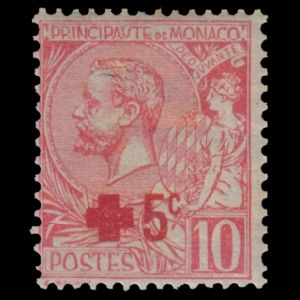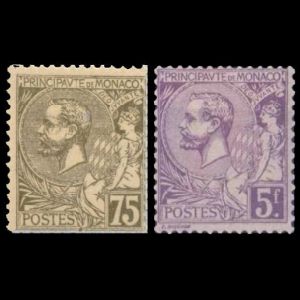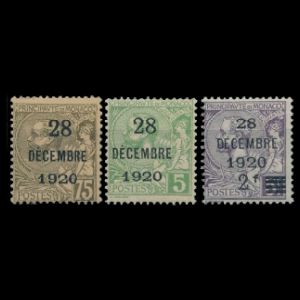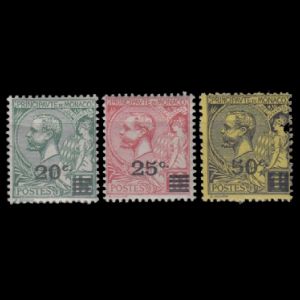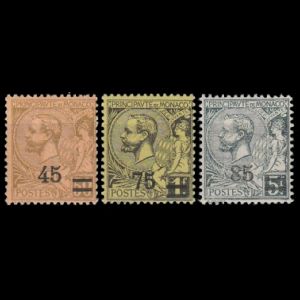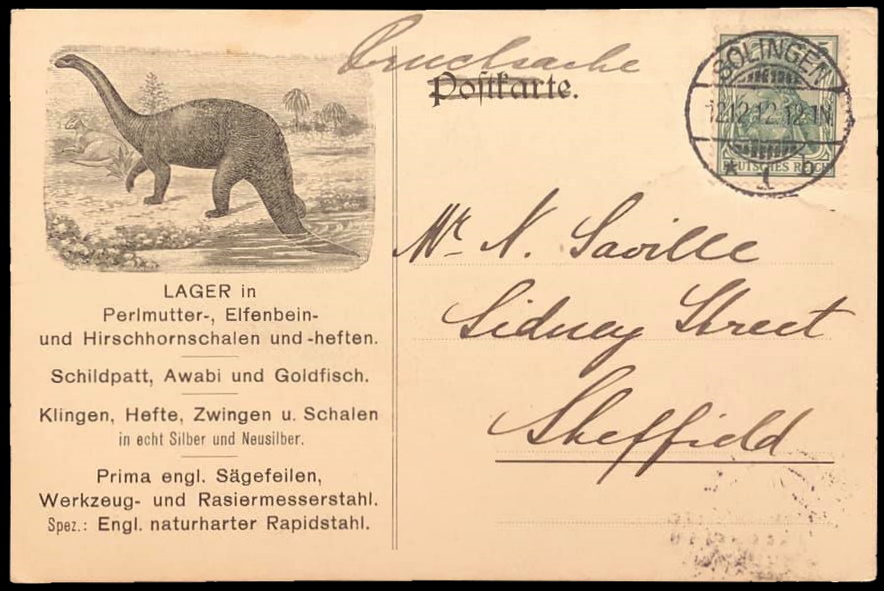Paleontology and Paleoanthropology related Philatelic items issued between 1840 and 1949: prehistoric animals, paleontologists and contributors to Paleontology and Paleoanthropology sciences, Natural History Museums, fossil locations.
Contents:
|
|
- The first postage stamps
- The first Paleontology related postage stamp
- The first Paleoanthropology related postage stamp
- Stamps related to Paleontology and Paleoanthropology
- Other stamps to consider
- Postal Cards
- Postal Stationary
- Commemorative postmarks
- References
- Acknowledgements
| <1950-1959 | 2026, 2025, 2024, 2023, 2022, 2021, 2020, 2019, 2018, 2017, 2016, 2015, 2014, 2013, 2012, 2011, 2010, 2009, 2008, 2007, 2006, 2005, 2004, 2003, 2002, 2001, 2000, 1999, 1998, 1997, 1996, 1995, 1994, 1993, 1992, 1991, 1990, 1989, 1988, 1987, 1986, 1985, 1984, 1983, 1982, 1981, 1980, 1979, 1978, 1977, 1976, 1975, 1970-1974, 1960-1969, 1950-1959, 1840-1949. |
The first postage stamp, commonly referred to as the "Penny Black", was issued in United Kingdom of Great Britain and Ireland in 1840. The second and the third postage stamps: "Two Pence Blue" and "Penny Red", issued in in Great Britain too, in 1840 and 1841 respectively.
 |
 |
| "Penny Black" and "Two Pence Blue" the first stamps in the world, UK 1840 | |
Other countries soon followed the United Kingdom with their own stamps.
Brazil was the second country in the world to issue postage stamps valid within the entire country, in 1843. They were three stamps having face values of 30, 60, and 90 reis and like the United Kingdoms's first stamps, the design does not include the country name.
Some cantons of Switzerland issued stamps starting in 1840, but it wasn’t until 1850 that the Federal Postal Service of Switzerland issued stamps valid across the entire country. At that date, Switzerland became the third country to release postage stamps valid across the entire country.
The "Basel Dove" is a notable stamp issued by the Swiss canton of Basel on July 1st 1845 with a value of 2½-rappen. It was the first multi-colour (blue, red, black) stamp in the world (to date all stamps were printed in one colour) and the only postage stamp issued by Basel. This stamp is also the first adhesive postage stamp to show an animal - a dove bird, but it was not valid in the entire country, rather than inside of the canton.
 |
 |
| The "Bull's Eye" stamps of Brazil 1845 | "Basel Dove", Switzerland 1845 |
The first stamps were rectangular or square in shape, depicting the leader of the country: king, queen, president, domestic animals or showed just a face value.
The first adhesive postage stamp, valid within the entire country, depicting an animal, was the Beaver (Castor canadiensis) issued in the Province of Canada in 1851, now known as the “Three-penny Beaver” and it is considered the first Canadian postage stamp.
The same design was printed on different paper in 1852 (Scott: 4a-d) and in 1859 as perforated with the face value increased from 3d to 5d (Scott: 15a-c). The stamp from 1851 is the most expensive variant.
The first stamp set depicting animals was issued in Peru in 1866. The set of 3 stamps, green, red and brown show two Llama species in the Andes Mountains: Lama vicugna and Lama glama. These stamps also were the first stamps of Peru with values in centavos, which was introduced earlier in the same year.In 1871 Peru issued the first commemorative postage stamp - 5c Locomotive and Arms stamp was issued to commemorate the "20th anniversary of the first railway in South America: Lima-Callao Railway". According to MICHEL stamp catalogue, this stamp exist in three shades: pale red, vermillion, carmine, MiNr: 16a-c respectively.
In 1892 and 1893 many nations of America and Spain issued commemorative stamps for the 400th anniversary of the West's discovery of America by Christopher Columbus. These sets are the first commemorative stamp sets.
 |
 |
 |
| Beaver stamp of Canada 1851, MiNr: 2w, Scott: 1 | Lama stamps of Peru 1866, MiNr.: 12-14, Scott: 16-18 | The Locomotive stamp of Peru 1871, MiNr.: 16, Scott: 19 |
People around the world began collecting stamps almost immediately after the first stamps were issued (Penny Black and Two Pence Blue). The first stamp collectors tried to find production differences between stamps of the same design—colour or paper variants, difference in perforation, errors on images, etc. The word "philately" is the English transliteration of the French "philatélie", coined by Georges Herpin in 1864 and is defined as the study of postage stamps and postal history.
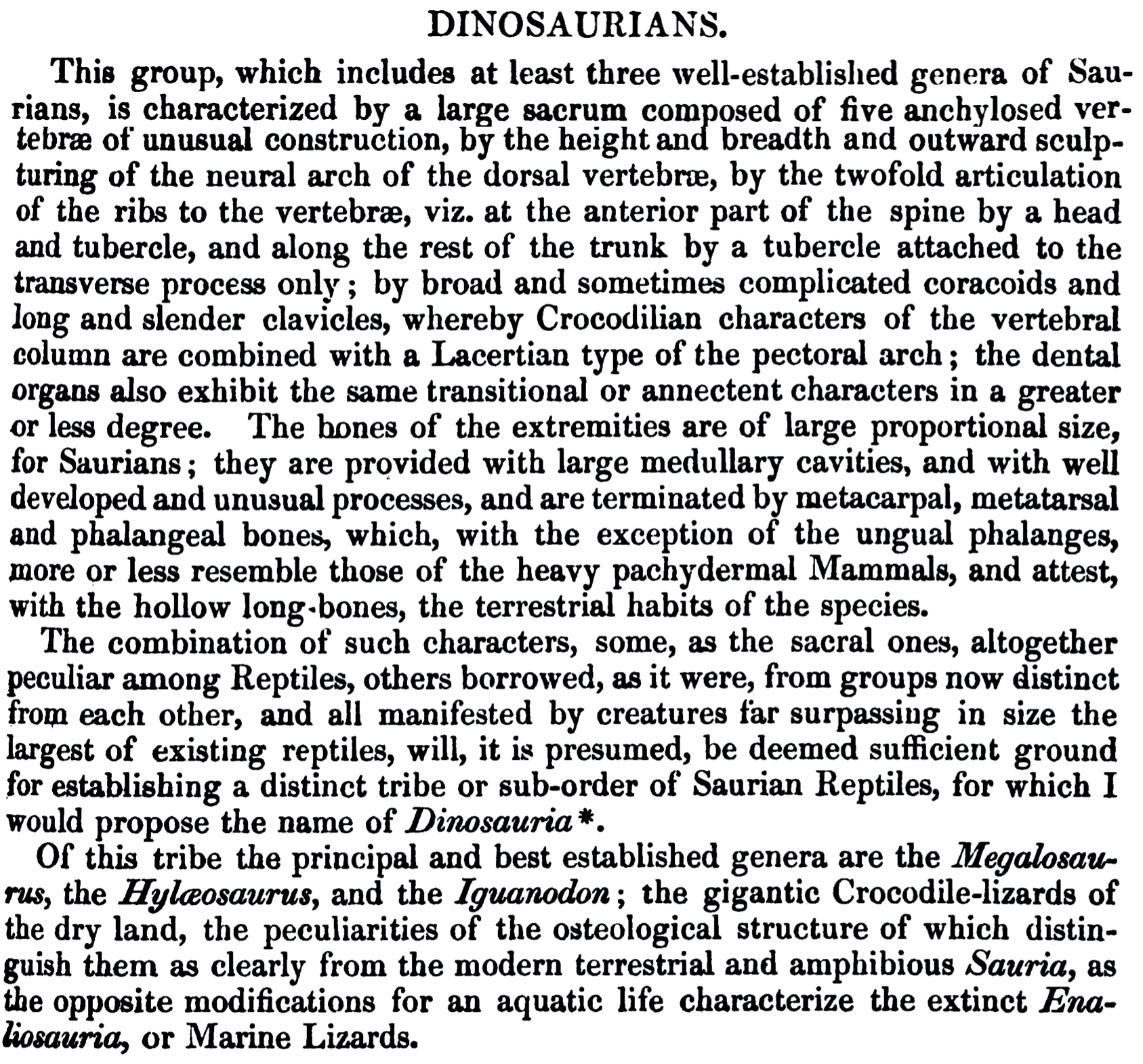 |
| Sir Richard Owen's coining of the word dinosaur, at a meeting of the British Association for the Advancement of Science in 1841. |
The first postage stamp was issued only one year before the famous English biologist, comparative anatomist Professor Richard Owen coined the word "Dinosaur" (1841) and only five years after the first prehistoric reptile was scientifically described and named "Ichthyosaur" (1835). The oldest Geological Survey in the world - the British Geological Survey - was also founded in 1835.
The Paleontology science was established in the 18th century as a result of Baron Georges Cuvier's work on comparative anatomy, and developed rapidly in the 19th century. The first dinosaur bones were described by English scientists, the Rev William Buckland and Gideon Mantell in the 1820s.
The term Paleontology has been used since 1822, when the word "paleontology" was used by the editor of a French scientific journal to refer to the study of ancient living organisms through fossils.
The term was coined by Henri-Marie Ducrotay de Blainville, the French anatomist and zoologist, from Greek "palaios" meaning "ancient", "ontos" meaning "being" and "logos" meaning "study".
De Blainville coined the term to formalize and distinguish this emerging field from other natural sciences, particularly in the context of the groundbreaking fossil work of Georges Cuvier, whose comparative anatomy and reconstructions of extinct animals—especially from fossil remains—laid the foundation for understanding prehistoric life.
The first Paleontology related postage stamp was issued in 1856 by the USA and depicted Thomas Jefferson (MiNr.: 5, Scott: 12) who was not only the 3rd American President (1801-1809), but also a central player in the beginnings of American paleontology. For more details about Thomas Jefferson contributions to Paleontology, please click here. This imperforate stamp was a part of multi-year definitive set of 5 stamps dedicated to American presidents, issued between June 1st 1851 and March 24th 1856.
Thomas Jefferson on USA postage stamps 1856-1938
| 14.03.1856 "Thomas Jefferson" | 1857 "Thomas Jefferson" [J2] | 19.08.1861 "Thomas Jefferson" [J3] |
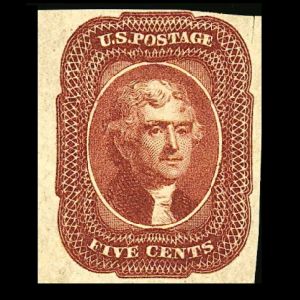 |
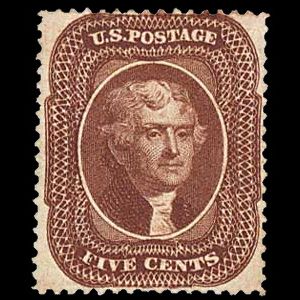 |
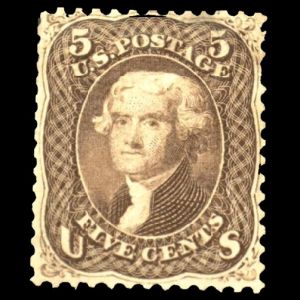 |
| The following 3 stamps are from the Confederate States, issued during civil war [J4] | ||
| 08.11.1861 definitive issue 1 | 25.07.1862 definitive issue 2 | 1862 reprint |
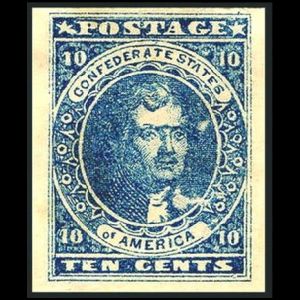 |
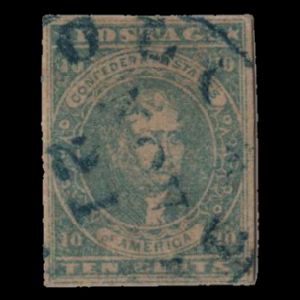 |
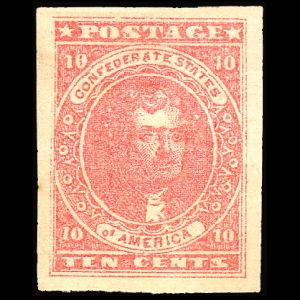 |
| ??.??.1862 "Presidents" | 13.03.1870 "Presidents" [J5] | 22.02.1890 "Presidents and other famous personalities", part of multi-year (1890-1893) definitive set |
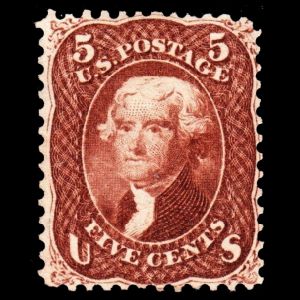 |
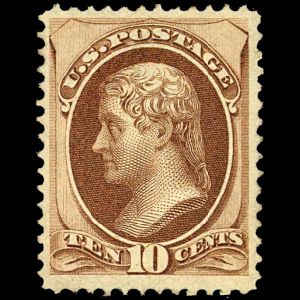 |
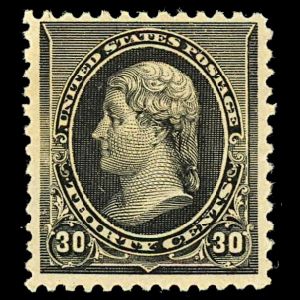 |
| 01.01.1894 "Presidents and other famous personalities" [J6] | 23.03.1903 "Presidents and other famous personalities", part of multi-year (1902-1908) definitive set | 21.04.1904 "Louisiana Purchase Exposition" [J7] |
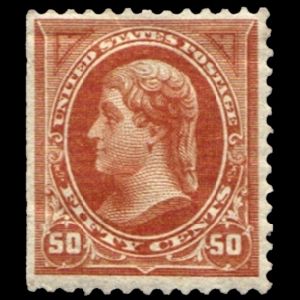 |
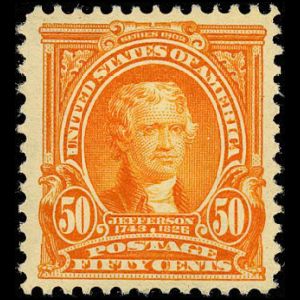 |
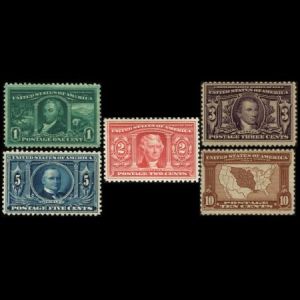 |
| 15.01.1923 "Personalities and Landscapes" [J8] | 01.05.1929 "Personalities and Landscapes" [J8] | 16.06.1938 "Presidents of USA" [J9] |
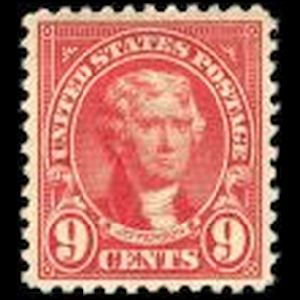 |
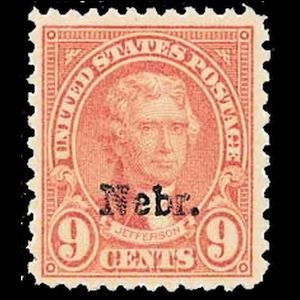 |
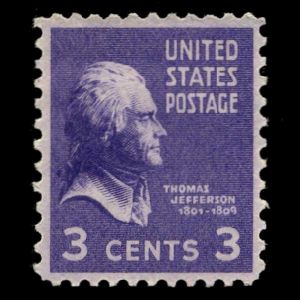 |
The term Paleoanthropology was introduced in scientific papers
in 1872 by French geologist Louis Lartet,
the son of the geologist and a principal founder of paleontology
Edouard Lartet,
who excavated Paleolithic sites in the 1860s and was an early advocate in France of the geological antiquity of humans.
Louis Lartet was renowned in his own right for his excavation of the Cro-Magnon human skeletons from
Les Eyzies in 1868.
In a paper published in 1872, Lartet identified three subdisciplines within paleontology:
pale´o-anthropologie, pale´ozoologie, and pale´ophytologie.
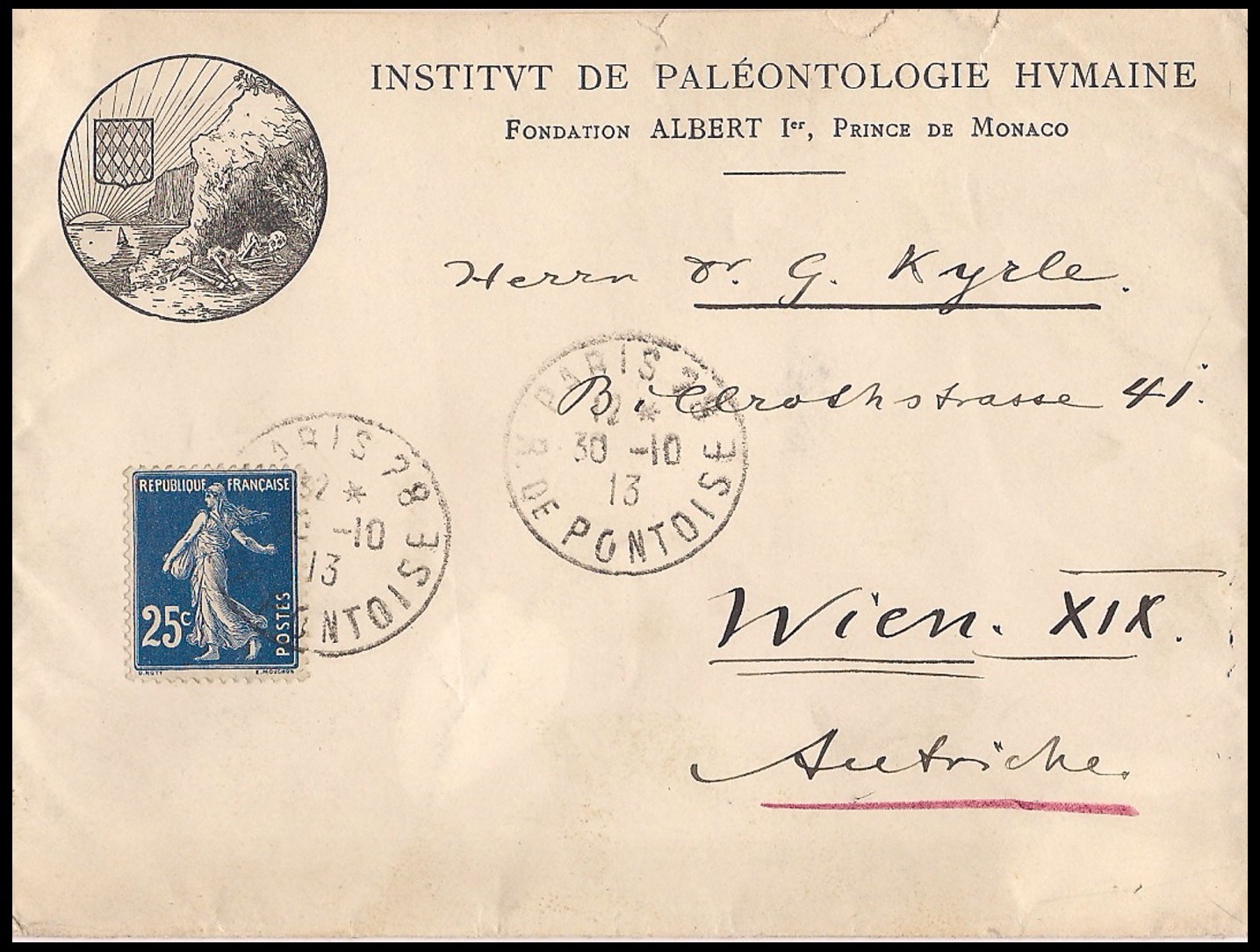 |
| Cover of the Institute of Human Paleontology, Paris, France 1913. |
Prince Albert I of Monaco who had a keen interest in the origins of
man and who founded The Museum of Prehistoric Anthropology in 1902 “to conserve traces of early humankind exhumed in the Principality
and neighbouring regions”.
He also founded the "Institute for Human Paleontology" (IPH) in Paris in 1910,
that was responsible for a number of archeological digs.
Establishment of the Institute was the result of Prince Albert I meeting with two of the most
famous founders of contemporary prehistoric archaeology, Professor Marcellin Boule and Abbe Henri Breuil.
The Institute appeared on the postage stamp for the first time in the set of Monaco
"100th anniversary of Prince Albert I" in 1949.
Prince Albert I of Monaco on definitive postage stamps 1881-1924
Prince Albert I of Monaco on commemorative postage stamps 1922-1949
| 15.07.1922 "Local motifs" | 18.02.1928 "International stamps show in Monte Carlo" | 10.12.1942 "Portraits of former rulers of Monaco" |
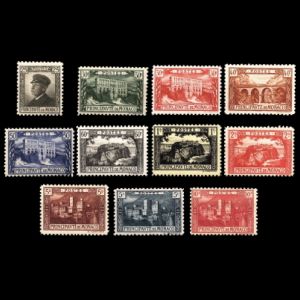 |
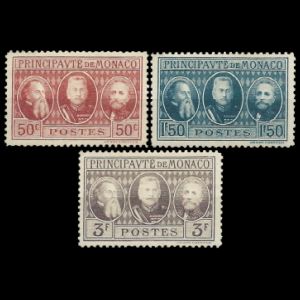
|
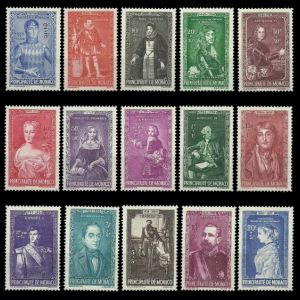 |
| 05.03.1949 "100th anniversary of Prince Albert I of Monaco" [A1] | ||
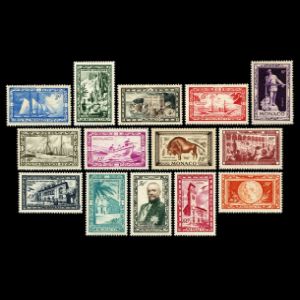 |
|
|
Notes:
[A1] In March 1949 Post Authority of Monaco issued a set of 15 stamps "100 anniversary of Prince Albert I".
Beside portrait of Prince Albert I, there are 3 other stamps of the set related to Paleo-Philately:
- 40f. - Building of Anthropology Museum in Monaco - the collections on display enable visitors to trace the major steps in the evolution of humanity through the various glacial and interglacial periods
- 25f. - Building of Institut de paleontologie humaine in Paris, France
- 18f. - An aurochs from the famous Lascaux cave
The first commemorative stamps related to Paleontology and Paleoanthropology were issued in 1936 in Ecuador, to commemorate the centenary of the Charles Darwin voyage to the Galapagos Islands (see below).
Charles Robert Darwin (1809 – 1882) was an English naturalist, geologist, and biologist, widely known for his contributions to evolutionary biology. His proposition that all species of life have descended from a common ancestor is now generally accepted and considered a fundamental concept in science. Evolution theory was the foundation for establishment of Paleontology and Paleoanthropology sciences.
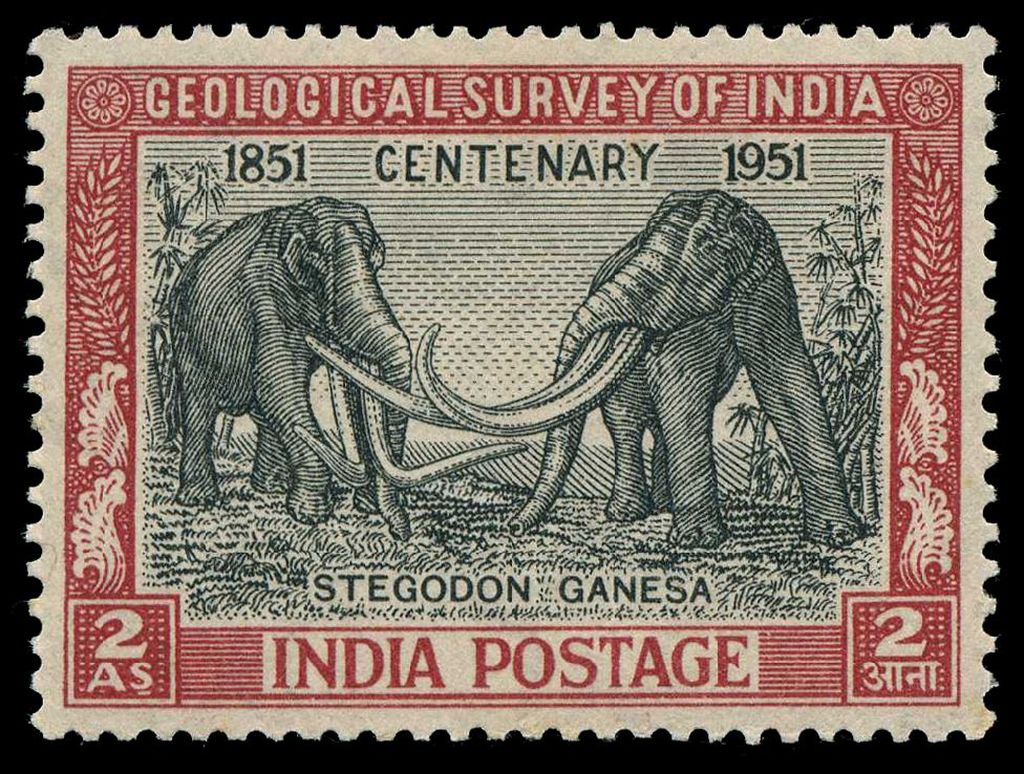 |
| The first commemorative stamp with reconstruction of prehistoric animals. Stegodons on "Centenary of Geological Survey of India" stamp of India 1951. |
To commemorate the Indian Geological Survey centenary on 13 January 1951, India Post released a stamp showing two prehistoric “elephants” (Stegodon ganesa).
Stegodons were primarily an Asiatic group of Mammutidae. This family is believed to have evolved sometime by the middle Miocene, nearly 15 million years ago, and became extinct by the late Pleistocene about 30,000–40,000 years ago.
A reconstruction and fossil of a dinosaur first appeared on a stamp released in 1958, in the set of three stamps “Chinese Paleontology”, issued by the People’s Republic of China.The stamp shows Lufengosaurus - the first complete dinosaur skeleton to be mounted in China and displayed in Beijing.
For more information about Milestones of Paleontology and Paleoanthropology related Philatelic items, please click here.
Commemorative stamps related to Paleontology and Paleoanthropology issued between 1932 and 1949
| xx.xx.1936 Ecuador "The centenary of the Darwin voyage to the Galapagos Islands" | 17.01.1947 USSR "100th anniversary of A.P. Karpinsky" [1] | |
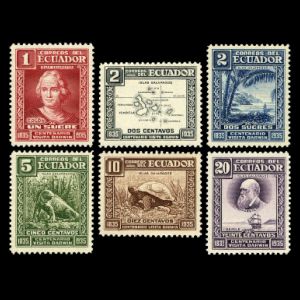 |
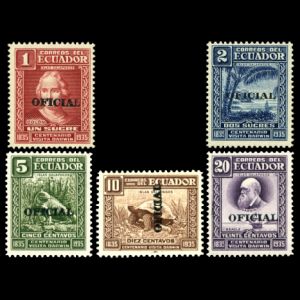 |
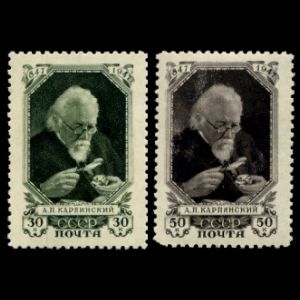 |
Notes:
[1] Aleksandr Petrovich Karpinsky (1847-1936) was a prominent Russian and Soviet geologist and mineralogist, most known as the first elected President of the Russian Academy of Sciences.
However, he was also great geologist and paleontologist, who made some important discoveries from the Ural Mountains region of Russia. In 1899, for example, he described the new bizarre species of prehistoric fish Helicoprion based on a jaw fossil found in limestones of the Ural Mountains.
Other stamps to consider: fossil locations, Natural History Museums, contributors to Paleontology
| 03.06.1932 China "Sino-Swedish Expedition (1927-1933)" [O1] | 14.01.1933 Argentina "The 50th Anniversary of the Founding of La Plata" [O2] | 16.07.-08.10.1934 USA "National Parks" [O3] |
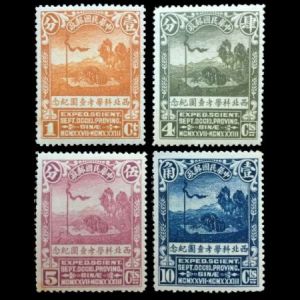 |
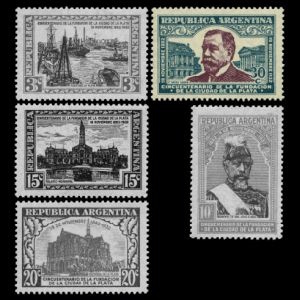 |
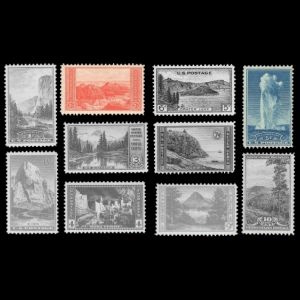 |
| 02.06.1939 Sweden "200th anniversary of Science Academy of Sweden" [O4] | 10.08.1946 USA "100th anniversary of the founding of the Smithsonian Institution" [O5] | 14.11.1949 France "Famous persons" [O6] |
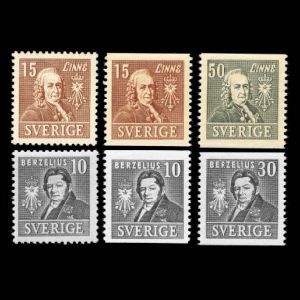 |
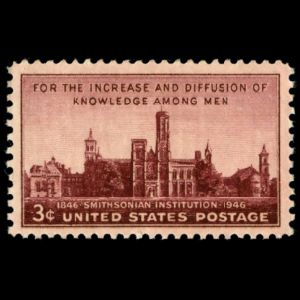 |
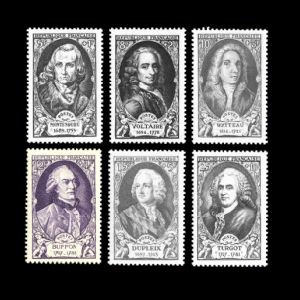 |
Notes:
[O1] In 1932, China released a set of four stamps in honor of "the Sino-Swedish Expedition". The expedition was financed not only by Sweden but also from international sources. They made numerous important scientific discoveries, including geological and paleontological discoveries in Inner Mongolia and Sinkiang. These discoveries included remains of some dinosaurs, though many were only fragmentary remains. For more information about this stamps set, please click here.
[O2] The stamp with the face value of 30c shows the building of the Museum of La Plata shown on the right side of the background.
The Museum of La Plata is the Natural History Museum in La Plata, Argentina. The museum, connected with the National University of La Plata, houses one of the most important paleontological and anthropological collections in South America.
For more information about the Natural History Museum in La Plata on stamps of Argentina, please click here.
[O3] Two stamps of the set shows the Grand Canyon and Yellowstone National Park were many fossils were discovered.
For more information about these National Parks on stamps of USA, please click here and here.
[O4] Carl von Linné or Carl Linnaeus (1707 - 1778), was a Swedish botanist, physician, and zoologist, who laid the foundations for the modern scheme of binomial nomenclature used in all biology-related sciences, including paleontology. He is known as the father of modern taxonomy, and is also considered one of the fathers of modern ecology.
[O5] The Smithsonian Institution has a very large Paleobiology Department.
For more information about the Smithsonian Institution on stamps of USA, please click here.
[O6] Georges Buffon (1709-1788) depicted on stamp with face value of 12+4F. He envisioned the nature of science and understood the roles of paleontology, zoological geography, and animal psychology.
The first Postcard, in the form we know it today, was invented by Dr Emmanuel Herrmann of the Military Institute of Vienna and was issued in October 1869 in Austria.
It was a light-brown 8.5x12cm rectangle with space for the address on the front, and room for a short message on the back. Thethe postcard (inscribed Correspondenz-Karte in German which means Correspondence Card in English) featured an imprinted 2 Kreuzer stamp on the top right corner, costing half the price of a normal letter and was valid for the delivery within the Austrian-Hungarian Empire.
The Austrian Post Office was doubtful whether the public would permit such lack of privacy in their correspondence, therefore the earliest cards bore an inscription on their reverse side: "Die Post übemimmt keine Verantwortung für den Inhalt der Mitteilung", in English: "The Post Office undertakes no responsibility for the contents of the communication".
Despite the fear, over three million postcards were sold in the first three months.
To see an example of a postally circulated postcard of Austria, posted from Prague (part of Austrian-Hungarian Empire at that time) to Neusatz in Hungary in 1871, please click here.
Other countries adopted postcards in 1870.
In the 1880s, many postcards were printed with small sketches or designs (called vignettes) on the message side, initially just in black, but increasingly also in colour.
Slowly, Germany came to dominate the industry of chromolithography, with many postcards being printed there. A large number of these featured illustrated views of a town and the expression "Gruss Aus" (or "Greetings from"), leaving enough space for a message.
At the end of 1890s a prehistoric animal was featured on the front side of "Gruss aus Schloss Banz" (Greeting from Castle Banz) postcard of Germany. It was the skull and skeleton of an Ichthyosaurus, discovered by construction to strengthen the river bank near the castle.
Ichthyosaurs ("fish lizards") are an extinct group of aquatic marine reptiles, they
lived in the Mesozoic era from the Early Triassic to the Late Cretaceous,
about 250 million to 90 million years ago and were contemporaries of the Dinosaurs.
The first recognized, partial, skeleton of an ichthyosaur was discovered in Lyme,
England in 1811-1812 by the twelve-year-old Mary Anning and her elder brother Joseph.
For more details about "The History of the Discovery of Ichthyosaurs", please click
here.
A dinosaur also appeared for the first time on a German postcard. It was a reconstruction of a Plateosaurus - the first dinosaur discovered and described in Germany, who was featured on a cachet of advertisement postcard of "Geo Saville" company.
Plateosaurus is a genus of dinosaur that lived during the Late Triassic period,
around 214 to 204 million years ago, in what is now Central and Northern Europe.
Plateosaurus was discovered (vertebrae and leg bones) in 1834 by Johann Friedrich Engelhardt and
described three years later by
Hermann von Meyer, Plateosaurus was the fifth named dinosaur genus
that is still considered valid.
von Meyer named the species Plateosaurus engelhardti in honour of the discoverer.
Even though, some topical collectors add postcards to their collections, instead the collection of postcards belongs to Deltiology.
Deltiology is an official term for collecting and studying postcards.
According to "GUIDELINES FOR JUDGING THEMATIC PHILATELY EXHIBITS" [FIP] of the Fédération Internationale de Philatélie (FIP - is one of the oldest and bigger worldwide philatelic organizations) "picture postcards, unless they are postal stationery produced by a Postal Authority" defined as Inappropriate Material for the philatelic exhibits.
Postal stationeries - item, such as a stamped envelope, letter sheet, postal card, lettercard, aerogram or wrapper, with an imprinted stamp or inscription indicating that a specific rate of postage or related service has been prepaid. Opposed to postcards, postal stationaries are valid philatelic items.
Postal stationery has been in use since at least 1608 with folded letters bearing the coat of arms Venice.
The first modern form of postal stationery was the stamped, or postal stationery, envelope created by the United Kingdom around 1841. Other countries quickly followed suit. Including the United States, which released the series of stamped envelopes in 1853.
Postal stationeries related to Paleontology and Paleoanthropology
Thomas Jefferson also had the honor of being featured on the first stationary with imprinted stamps issued by the USA. Some people have dubbed him the "Father of American Paleontology", was featured on the imprinted stamps of one of the first postal stationeries of USA.There are many postal stationeries with portraits and profiles of Thomas Jefferson issued in USA in the second half of 1800s and beginning of 1900s. The image below shows only a few of them.

Many fossil discoveries and publications about prehistoric animals since the middle of the 19th century, as well as publication of "Origin of Species" by Charles Darwin in 1859 caused hot debates in European and North American scientific societies about prehistoric life forms, their extinction and evolution. These discussions led to widespread interest in paleontology by the public.
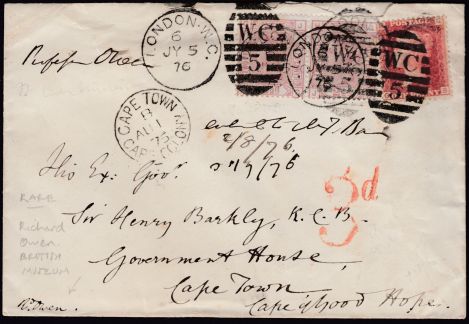 |
| Letter from Richard Owen to Sir Henry Barkly, 1876. |
Here are very few important events related to Paleontology between the second half of the 19th century and the beginning of the 20th century.
- The first dinosaur sculptures were created by Benjamin Hawkes for the Great Exhibition at the Crystal Palace in London in 1854 on the request and supervision of Richard Owen.
- The Smithsonian Institution, one of the oldest Natural History Museums in the USA, was established in 1855.
- In 1856 remains of the skull and other skeletal parts of a prehistoric human was found in the Neander Valley near Duesseldorf, Germany, which was then named after the place "Neanderthal". February 4, 1857, German anatomist Hermann Schaaffhausen publicly announced the discovery of the Neanderthal Man
- The first skeleton of Mammoth mounted in West Europe and shown for the public in 1869 in Belgium (The first Mammoth skeleton was mounted and exhibited for the public in 1808 in St. Petersburg, Russia).
- The Natural History Museum in London was established in 1881.
- A statue of Brontosaurus was created at the Zoo in Hamburg in 1907 (the first Sauropod sculpture to be exhibited).
- A life-size Iguanodon sculpture was installed at the entrance of the Aquarium in the Berlin Zoo in 1913.
- "Fighting Brontosaurus with Ceratosaurus" sculpture was installed In the Crimea Peninsula in 1932 (at that time USSR, now Ukraine). It was the first sculpture of dinosaurs mounted in a public place, on the mainland of Europe and one of the first such statues in the world.
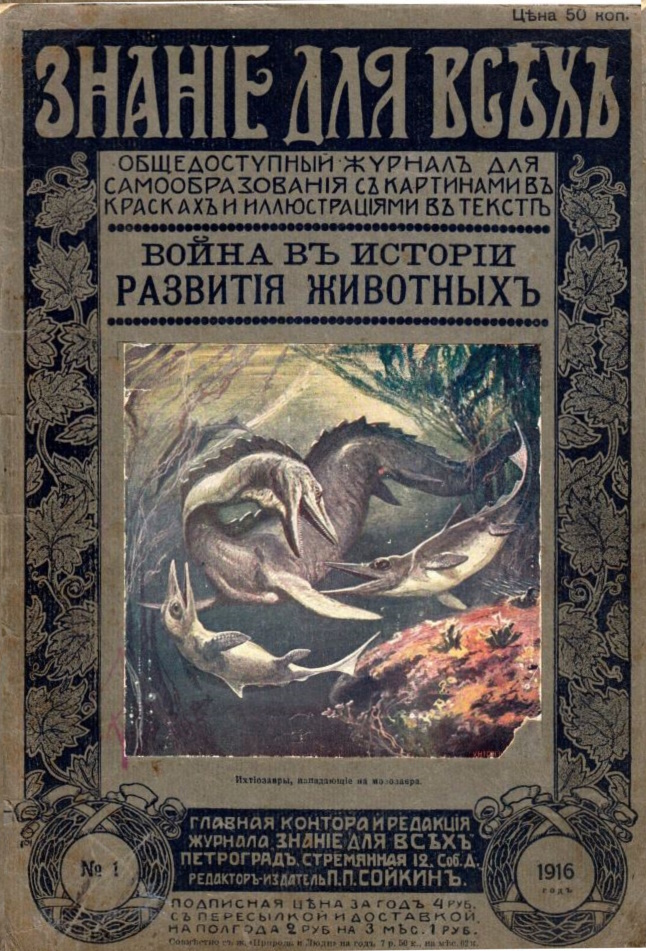 |
Prehistoric animals of all kind (marine, avian and terrestrial) appeared on covers of popular magazines, as the Russian magazine from 1916 shown on the right (PDF file of 53Mb).
With growing interest in philately and the introduction of commemorative postage stamps, decorations or advertisements were added to the cachets on either the front or reverse side. At the beginning of the 20th century, some companies started to use fossils and reconstructions of prehistoric animals in their logos and advertisement materials - including the cachets of postal stationery. The official Postal Services of countries also started using decorative postmarks and meter frankings with images of prehistoric animals.
Another kind of postal stationeries, issued at the same time, were "sightseeing" postal stationeries with some cachets on the front side, such as a postal stationery of Germany from 1940s.
The pre stamped postcard from the multi-year set "Get to know Germany" shows some trunks of 200 million years old petrified trees of Chemnitz on the cachet.
The postal stationery with prehistoric animals (Ammonite) on imprinted stamp was issued much later - in 1970 in Poland.
| 1922 USA "Torrance Lime & Fertiliser Company" [PS1] | 1928 Estonia [PS2] | 1940s Belgium "Sinclair" |
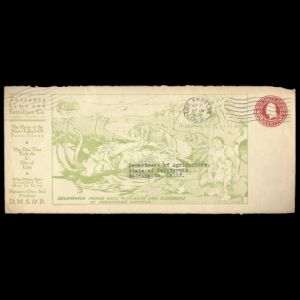 |
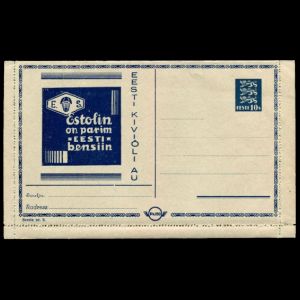 |
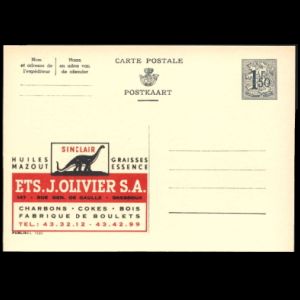 |
| 1930s Germany "Ostpreußens Bernsteinküste des Samlands" [PS3] | 1940s Germany "Get to know Germany: Chemnitz" | |
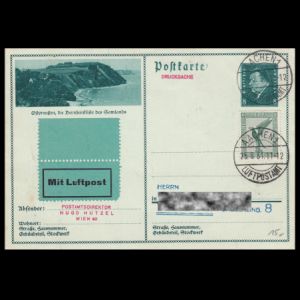 |
 |
|
Notes:
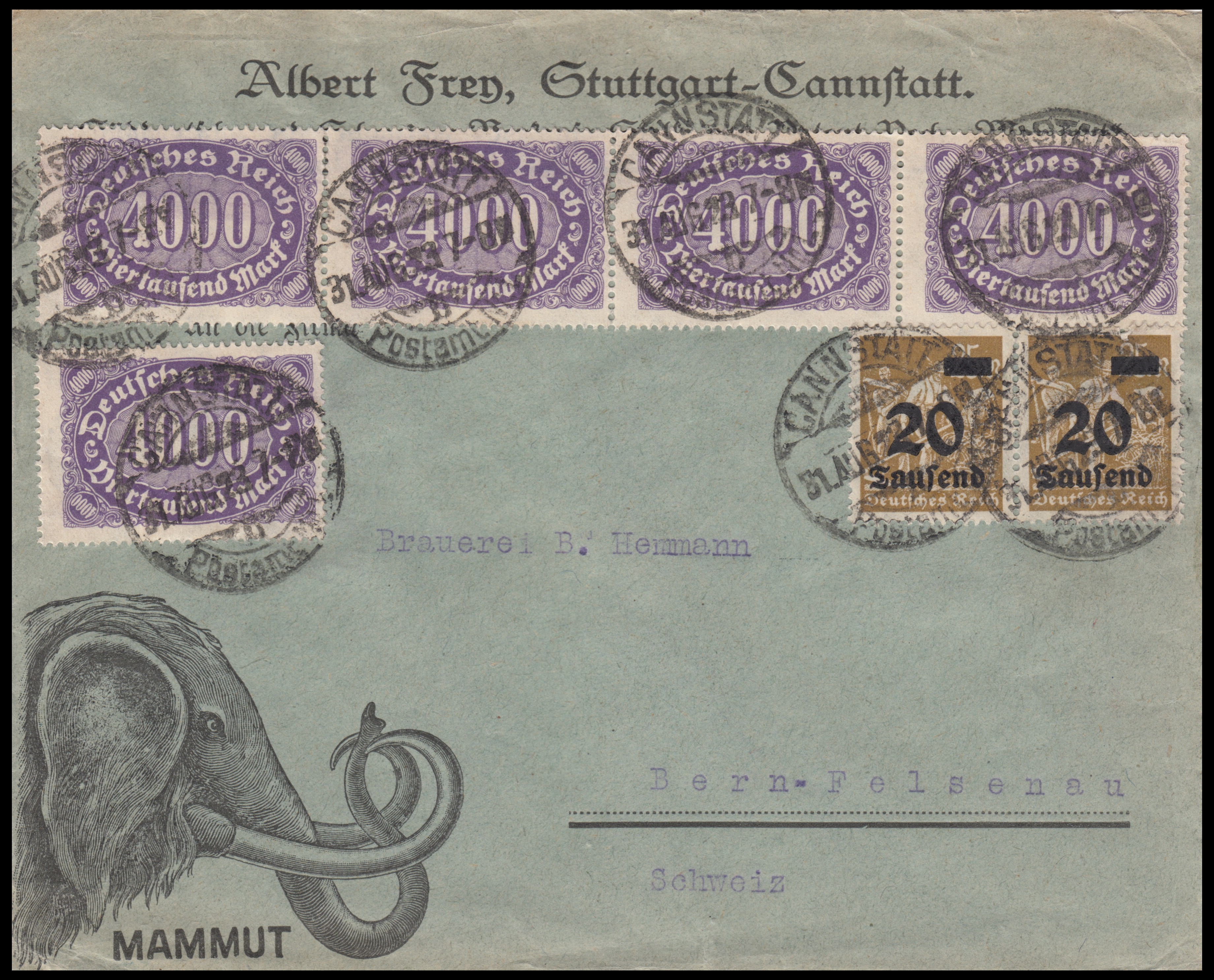 |
| Mammoth head on cachet of a cover sent in Germany in 1922 |
According to "GUIDELINES FOR JUDGING THEMATIC PHILATELY EXHIBITS" [FIP] of the Fédération Internationale de Philatélie "decorative printings or illustrations on the envelope/card, or the message and other parts of the content, are the non-postal (= private) elements which cannot be used for thematic treatment."
[PS1] The 2c prepaid envelope from the USA, produced by the Torrance Lime & Fertiliser Company, from Lomita city in California, which shows some prehistoric animals and Neanderthals. The advertising text and image was printed by the company on the front side of the standard postal stationery.
For more information about the postal stationery please click here.
[PS2] A Trilobite shown on the cachet of Estonian pre-paid postcard.
[PS3] "Ostpreußens Bernsteinküste des Samlands" in English East Prussia's amber coast of the Samland.
Sambia Peninsula, nowadays known as the Kaliningrad Peninsula, belongs to Russia. Amber has been found in the area for over two thousand years, especially on the coast.
Commemorative postmarks and meter franking related to Paleontology and Paleoanthropology
The only commemorative postmarks related to Paleontology or Paleoanthropology issued between 1840 and 1949 were the postmark from Ecuador - "Centenary of the Darwin voyage to the Galapagos Islands" from 1935 and "History of Glass" from the USA from the end of 1930sThe postmark of Ecuador supposed to be used for the First Day Covers (FDC) of the corresponded stamps, but due to some political reasons the stamps were issued in the following year only (1936).
| 17.09.1935 Ecuador "Centenary of the Darwin voyage to the Galapagos Islands" | 1939 USA "History of Glass" | |
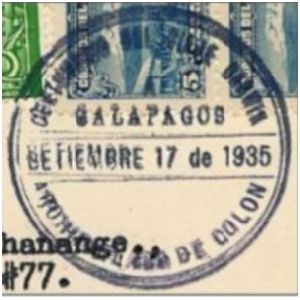 |
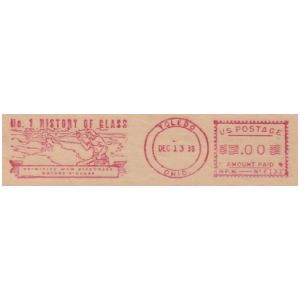 |
|
Postmarks and meter franking of commercial companies with fossils and prehistoric animals on it.
The first postmarks and meter franking with fossils and prehistoric animals were issued by the USA and Germany.In the USA it was Sinclair Oil company.
Dinosaurs became so popular in USA that Sinclair Oil company registered one of them as a trademark in 1932. The corporation's logo features the silhouette of a large green Sauropod dinosaur - Brontosaurus, based on the then-common idea that oil deposits beneath the earth came from the dead bodies of dinosaurs. Sinclair company starts to use the dinosaur on cachets of their postal stationeries and their meter franking in all of their offices around the world.
The size, color and design of their meter franking was changing with the time.
The image below shows several variants of Sinclair's meter franking, issued in 1930s and 1940s.

For more details about Sinclair's meter franking variations, please see "Sinclair postmarks" and "Oil and Dinosaurs" philatelic exhibits created by Mr. Fran Adam from USA and Mr. Dominique Robillard from France.
At the same time in Germany, several companies choose some fossils and Mammoth for their logos and meter frankings.
| 1935 "G.Anton Seelmann & Son from Neustadt" | 1937 "J. Kalkoffen GmbH from Saarbruecken" | 1938 "Chemische Werke Marienfelde Richard Boesche" |
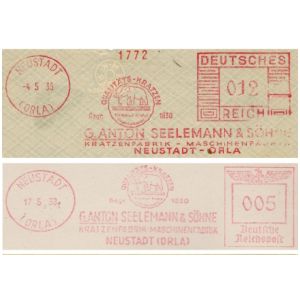 |
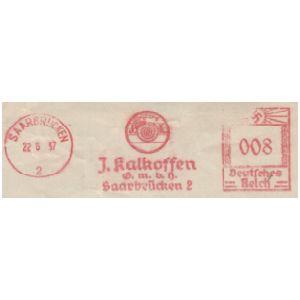 |
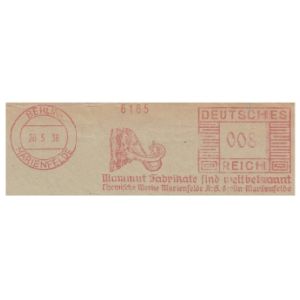 |
| Design changed over the years | Fossil of Foraminifera |
In the next 10 years (1950-1959) more postage stamps were issued related to Paleontology and Palaeoanthropology then had been issued in the previous 110 years!
References:
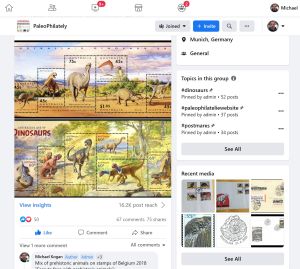
|
Do you have any questions or want to talk about your hobby
with collectors who share the same interest? Looking for swap partners ? Join more than 1700 members of the "PaleoPhilately" group on Facebook |
- Postage stamps: Wikipedia Encyclopedia Britannica,
- Commemorative stamp: Wikipedia, Smithsonian
- Philately: Wikipedia
- History of postcards: worldpostcardday.com, Encyclopedia Britannica,
- Deltiology: Wikipedia
- Postal stationery: Wikipedia
- Paleontology: Wikipedia
- Paleoanthropology: Wikipedia,
"Crafting a New Science: Defining Paleoanthropology and Its Relationship to Prehistoric Archaeology, 1860–1890", by Matthew R. Goodrum. Published by: The University of Chicago Press on behalf of The History of Science Society in 2014. - FIP: "GUIDELINES FOR JUDGING THEMATIC PHILATELY EXHIBITS" (PDF)
Acknowledgements:
- Many thanks to Dr. Peter Voice from Department of Geological and Environmental Sciences, Western Michigan University, for reviewing the draft page and his very valuable comments.
- Many thanks to the fellow collectors Mr. Peter Brandhuber from Germany and Mr. Jon Noad from Canada who shared with me scans of very rare covers and postal stationeries from their collections.
| <<195x | index | current year>> |
